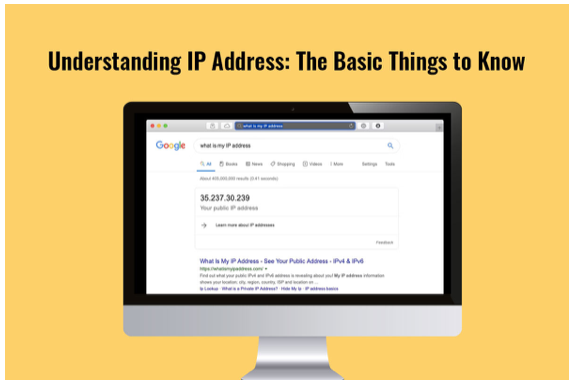Understanding IP Address: The Basic Things to Know
Table of Content
In the vast and intricate landscape of the internet, a fundamental concept governs the very essence of communication - IP addresses. IP is the acronym for Internet Protocol, and these addresses essentially act as the digital fingerprints of devices interwoven within the vast web. This article aims to demystify the complexities surrounding IP addresses, shedding light on essential aspects that serve as a compass for anyone navigating the digital realm.
What is an IP Address?
The Digital Identifier
At its core, an IP address is a distinctive numerical designation provided to each device in a computer network that interacts via the Internet Protocol. Much like a home address in the physical world, it serves as a digital identifier, ensuring that data packets traverse the intricate web to reach their intended destination.
Types of IP Addresses
Diving into IPv4 and IPv6
In the vast realm of IP addresses, understanding how to find your public IP address mac becomes essential for navigating the digital landscape. Two primary versions, IPv4 (Internet Protocol version 4) and IPv6 (Internet Protocol version 6), dominate this scene. IPv4, the elder statesman in this scenario, employs a 32-bit address scheme, inevitably limiting the number of unique addresses. In contrast, IPv6, its modernized successor, embraces a 128-bit address format, exponentially expanding the pool of available addresses to meet the demands of our ever-growing legion of internet-connected devices.
IP Address Components
Breaking Down the Numbers
Breaking down the anatomy of IP addresses reveals a numeric composition separated by periods. In the case of IPv4, the format is xxx.xxx.xxx.xxx, with each "xxx" ranging from 0 to 255. For instance, the commonplace IPv4 address 192.168.1.1 exemplifies this structure. On the other hand, the hexadecimal notation of IPv6 addresses, like 2001:0db8:85a3:0000:0000:8a2e:0370:7334, provides a more extensive and flexible range of possibilities.
Static vs. Dynamic IP Addresses
Stability vs. Flexibility
The dynamism of IP addresses extends to their classification as either static or dynamic. A static IP address remains constant and is manually assigned, which is ideal for devices like servers requiring a consistent point of access. In contrast, dynamic IP addresses are automatically assigned by a network's DHCP (Dynamic Host Configuration Protocol) server, providing flexibility for devices that may not maintain a constant connection to the network.
The Significance of IP Addresses in Networking
Facilitating Communication Across Networks
At the core of computer networks lies the omnipresent IP address, an indispensable element ensuring the seamless flow of data. Whether it's a computer, smartphone, or any networked gadget, each device relies on its unique IP address to establish structured communication, forming the backbone of connectivity across the internet.
Subnetting: Optimizing IP Address Management
Efficient Resource Utilization
To optimize the management of IP addresses, the technique of subnetting comes into play. This practice involves dividing a large network into smaller, more manageable segments known as subnets. Beyond just efficient IP address use, subnetting enhances security and performance. Network administrators strategically allocate IP addresses, reducing congestion and improving the overall efficiency of data transmission.
Public and Private IP Addresses
Navigating the Internet and Local Networks
IP addresses wear the dual hats of public and private identifiers. Public IP addresses, visible on the internet, serve as the face of a network to the external world. Conversely, private IP addresses operate within local networks, like those found in homes or businesses, allowing devices to communicate internally without exposing their addresses to the vast internet at large.
NAT (Network Address Translation) and IP Address Conservation
Multiplying Connectivity without Exhausting IP Resources
With the surge in device proliferation, the demand for IP addresses has reached unprecedented levels. Enter Network Address Translation (NAT), a crucial player in conserving IP addresses. When accessing the internet, NAT cleverly allows several devices within a local network to share a single public IP address. This solution extends the usability of IPv4 addresses, mitigating the looming threat of address exhaustion.
IP Address Geolocation: Tracing Digital Footprints
Unveiling the Geographic Origin of Devices
A captivating facet of IP addresses is geolocation, revealing the physical location of a device based on its IP address. Though not pinpoint accurate, this feature finds diverse applications—from enhancing online security measures to delivering localized content and services. Understanding IP address geolocation adds an extra layer of awareness in today's interconnected world.
Emerging Trends in IP Addressing
Adapting to Evolving Technologies
In the ever-evolving landscape of technology, IP addressing marches in step with progress. The rise of the Internet of Things (IoT) and the proliferation of smart devices amplify the demand for IP addresses. IPv6, with its expansive address space, emerges as the linchpin accommodating this surge in connected devices. It ensures that the digital infrastructure evolves in harmony with technological advancements, marking the fluidity of the digital frontier.
IPv6 Adoption: Embracing a Broader Horizon
Solving the IPv4 Limitation
In the ever-expanding digital landscape, the adoption of IPv6 stands as a crucial step toward embracing a broader horizon and addressing the limitations posed by IPv4. The 32-bit address scheme of IPv4 is confronted with challenges as the number of connected devices continues to rise. IPv6, with its expansive 128-bit format, emerges as the beacon to accommodate this proliferation and, in turn, enhances the efficiency and resilience of our internet infrastructure.
IP Address Management Tools: Orchestrating Connectivity
Streamlining Administration for Efficient Networks
As networks evolve into intricate ecosystems, the orchestration of connectivity becomes a pivotal concern. IP address management tools take center stage, streamlining the allocation and monitoring processes. In the realm of network administration, these tools play a critical role in maintaining the smooth operation of networks amidst the increasing complexity of modern infrastructures. They become indispensable for upholding order, security, and optimal performance.









